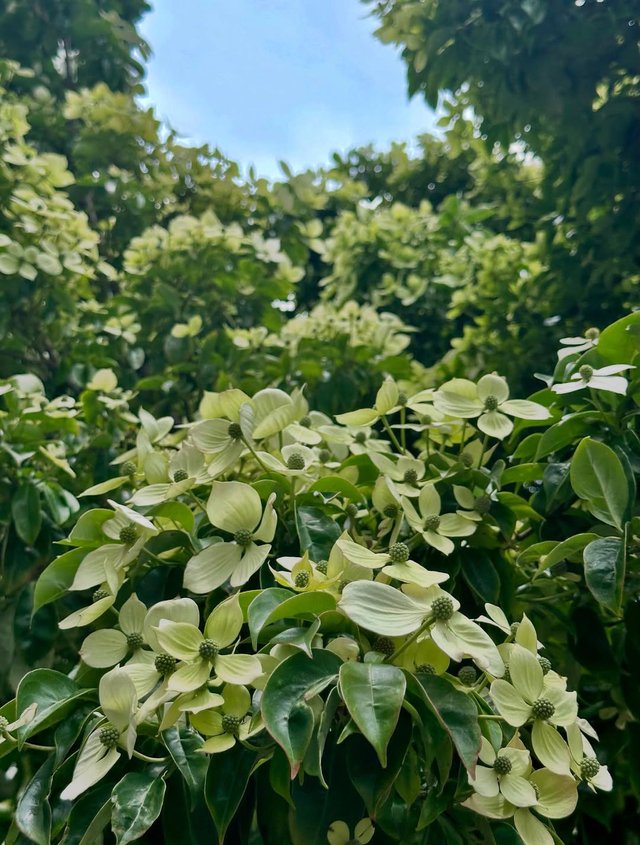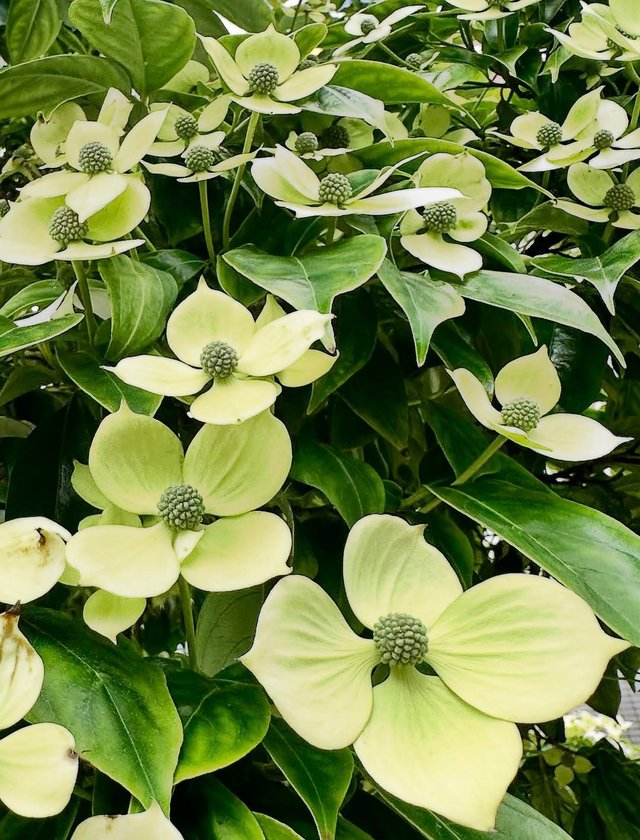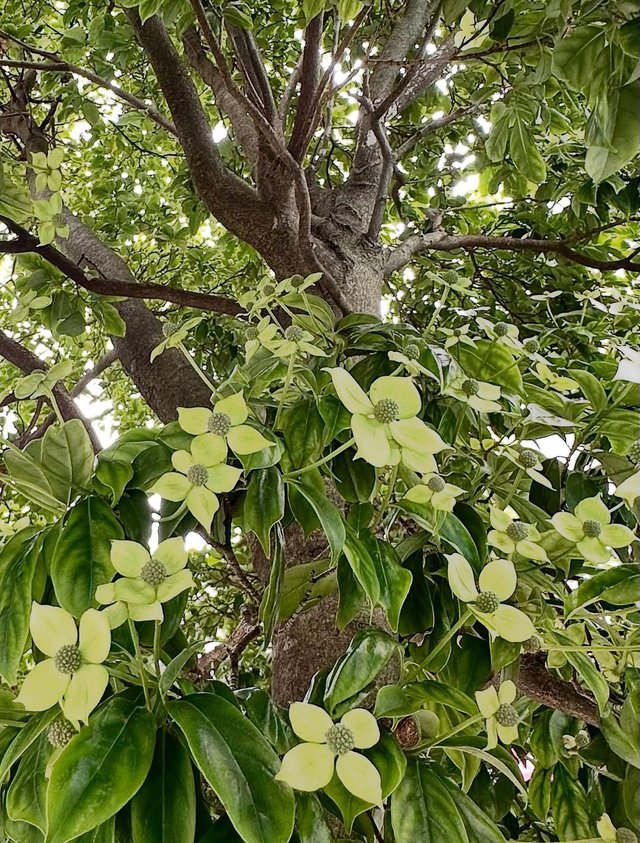Cornus capitata
The Cornus capitata, commonly referred to as the Himalayan flowering dogwood, is a stunning, ornamental flowering tree native to the high-altitude regions of the Himalayas, including parts of India, Nepal, Bhutan, and Tibet. Renowned for its beautiful bracts that resemble petals, this tree adds elegance and vibrancy to any landscape, especially in spring and early summer.
The beauty of Cornus capitata lies in its unique flower structure. Technically, what appears to be the “flower” is a cluster of small, yellowish-green true flowers surrounded by four large, showy white to creamy bracts—modified leaves that mimic petals. These bracts form a cross-like pattern, characteristic of many dogwoods.The flower clusters develop into attractive red, strawberry-like aggregate fruits that persist into autumn and are enjoyed by birds and small mammals.
As a native species to the Himalayas, Cornus capitata plays an important role in forest biodiversity. Its fruits provide food for native birds and mammals, while its flowers support pollinators in high-altitude ecosystems. When planted in non-native regions, it’s valued more for ornamental purposes and less for ecological services, though it still contributes to local wildlife support.




